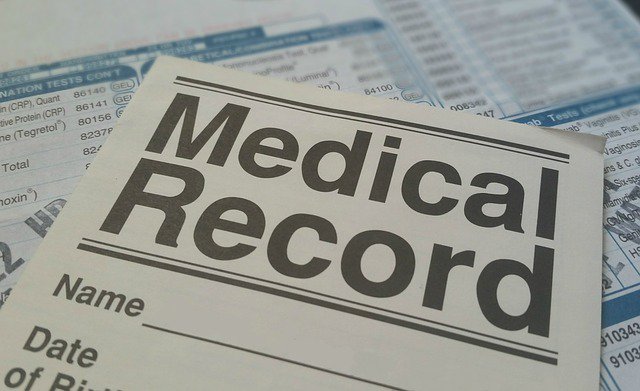Non-Face-To-Face Service Reimbursable 2017 (CPT 99358, 99359)

Changes have been made to the California OMFS since the publication of this article. Be sure to see the latest analyses here and here.
2021 OMFS updates drastically changed how E/M codes are billed. The following information may not be applicable for DOS on and after March 1, 2021.
Yesterday in this space, we examined the new order from the California Division of Workers’ Compensation (DWC) announcing the upcoming adjustment to the Physician and Non-Physician section of the Official Medical Fee Schedule (OMFS). The adjustment goes into effect on March 1, 2017, and with it come a variety of new CPT codes. Today, we’re focusing on two of these codes in particular: 99358 and 99359. Each allows physicians or nonphysician practitioners to bill for prolonged services that are not face-to-face.
What, exactly, does that mean? Consider the following example.
A provider agrees to treat a new workers’ comp patient. To better inform their treatment, this provider is sent old medical records. These records are disorganized, perhaps incomplete, and contain multitudes of irrelevant information that has no direct bearing on the current case. So the provider digs in and studies the information on his or her own time, sifting through the records to uncover any pertinent information. They are undeniably providing a service – a better-informed provider will create a better treatment plan. But until now, this sort of work has always been pro-bono. Something extra that a dedicated provider squeezes in on the side.
Not anymore. Starting on March 1, 2017, workers’ comp providers can bill for prolonged non-face-to-face services using the following CPT codes:
- 99358 – Prolonged evaluation and management service before and/or after direct patient care; first hour
- 99359 (add-on code) – Each additional 30 minutes (List separately in addition to code 99358 for prolonged service)
As with all other CPT codes with a strictly-defined time component, the provider must meet over half of the specified time before billing. In this case, that means that a provider must spend 31 minutes or more before billing code 99358, and 76 minutes or more before adding code 99359.
CPT Guidelines
99358: May be reported on a different date than the primary service to which is it related. Must relate to a service or patient where (face-to-face) patient care has occurred or will occur and relate to ongoing patient management. Does not need to be continuous. Time can not be counted more than once towards the provision 99358 and any other PFS service.
You need to spend at least 31 minutes of time to bill the first hour (99358) of prolonged time.
99359: You need to spend at least 76 minutes to bill the first hour plus an additional 30 minutes (+99359) of prolonged time.
Impact
Billing CPT Code 99358 can significantly increase provider revenue. As a point of comparison, let’s look at the reimbursement for 99358 against that for 99214, the most commonly-used Evaluation and Management CPT Code.
CPT |
Non-facility and Facility reimbursement 3/1/2017 |
99358 |
$149.40 |
99359 |
$41.96 |
99214 |
$147.02 (5.4% increase over 2016 reimbursement) |
17A RVU |
99358 |
99214 |
Percent Difference |
Work RVU (RVUw) |
2.1 |
1.5 |
+29% |
Practice Expense RVU (RVUPE) |
.91 |
1.43 |
-57% |
Malpractice RVU (RVUMP) |
.15 |
.1 |
+33% |
Total RVU |
3.16 |
3.03 |
+4% |
The reason for the higher reimbursement is that Medicare assigns CPT 99358 a higher Work RVU and Malpractice RVU than the ones assigned to CPT 99214. This difference offsets the lower Practice Expense RVU. The higher Work RVU is of particular note – this accounts for the time, technical skill and effort, mental effort and judgment, and stress to provide a service.
Status Code
So what fomented this change? A simple change in Medicare status codes from A to B. Per California Code of Regulations § 9789.12.8:
“A = Active Code. These codes are paid separately under the physician fee schedule. There will be RVUs for codes with this status.
B = Bundled Code. Payment for covered services are always bundled into payment for other services not specified.”
The status code assigned to a procedure code determines the payment status of a that code. For procedure code 99358, the base maximum fee calculation is $131.98, but the OMFS reimbursement is $0. This is because 99358 is assigned a status code B, and is therefore bundled into payment for other services.
Takeaway
The fact is that some patients require additional non-face-to-face care, and their providers deserve to be paid for that care. Medicare now acknowledges this. The introduction of CPTs 99358 and 99359 as reimbursable codes on March 1, 2017, creates an opportunity for reimbursement for the additional work required for workers' comp patients. The services covered by these codes were often provided for free; that they are now billable is a boon to providers across the state. We’re hosting a webinar on this topic in March – sign up below to learn more about the opportunity these codes present.
Excitement aside, it is likely that we will see a spike in incorrect reimbursements for codes 99358 and 99359 in the coming months. To learn more about disputing incorrect reimbursements through Second Bill Review (SBR), click here.
For an in-depth examination of these CPT Codes, including a free e-booklet full of resources and tips for billing these codes, watch our webinar below.
CPT CODES 99358 & 99359 WEBINAR
DaisyBill provides content as an insightful service to its readers and clients. It does not offer legal advice and cannot guarantee the accuracy or suitability of its content for a particular purpose.



.gif)
